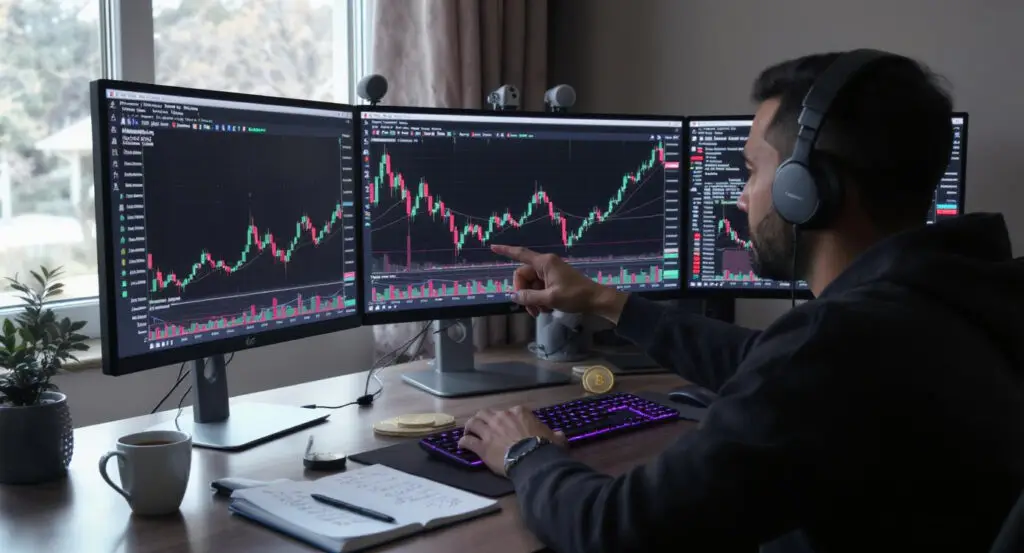XRP and Ethereum: A New Shared Resource
XRP (CRYPTO: XRP) and Ethereum (CRYPTO: ETH) have historically served distinct purposes within the cryptocurrency landscape. XRP has functioned primarily as a payments chain, designed for swift and compliant transactions, while Ethereum has been the pioneering workhorse for smart contracts and decentralized applications.
However, a significant development in late June has granted XRP access to a critical resource previously dominated by Ethereum: its vast population of developers. This strategic crossover has the potential to supercharge XRP’s long-term growth prospects, bridging two fundamentally different blockchain ecosystems and opening new avenues for innovation and adoption within the XRP Ledger (XRPL) universe.
The Game-Changing EVM Sidechain Launch
For years, a key challenge for developers looking to build smart contracts or decentralized applications (dApps) on XRP’s chain was the need to learn a separate technology stack. This barrier to entry limited the flow of talent and innovation. Ripple, the company behind XRP, addressed this by launching its Ethereum Virtual Machine (EVM) sidechain on the mainnet on June 30. This crucial update delivers full Ethereum-compatible smart contract support to the XRP ecosystem.
The sidechain now allows coders to deploy smart contracts on XRP using the same familiar toolkit they utilize on Ethereum, making the process of porting existing decentralized exchanges (DEXs) or lending protocols to XRP almost a copy-and-paste operation. XRP itself serves as the native gas token for transaction fees on this sidechain, with a bridge protocol facilitating asset transfers between the sidechain and XRPL’s mainnet, ensuring existing liquidity remains accessible.
Bridging to Ethereum’s Developer Ecosystem
This solution is particularly ingenious because it preserves XRPL’s ultra-cheap, near-instant payment rails and inherent compliance features, while simultaneously insulating the core network from the heavier computation and potential exploits often associated with generalized smart contracts. Crucially, it makes siphoning skilled smart contract developers from Ethereum significantly easier.
Attracting at least some of these developers to contribute to the XRP ecosystem is practically a given, especially if additional capital or grants are made available to incentivize their participation. The beneficial effect of XRP gaining direct access to Ethereum’s large and active developer community is hard to overstate, as it immediately expands the talent pool available to build on the XRPL.
Developer Activity: A Catalyst for Network Value
The impact of gaining access to Ethereum’s developer community cannot be overstated. This influx of talent is a powerful enabler for XRP’s ecosystem to grow exponentially over time, which in turn can send the chain’s overall value skyward. Numbers underscore this potential: as of late July, the Ethereum ecosystem boasted approximately 5,866 monthly active developers, while XRPL’s community had around 2,800 active contributors in June.
Even a modest 5% of Ethereum’s builders deciding to port their projects to XRPL EVM would translate to roughly 293 new minds working on the chain, representing a significant 10% bump to XRPL’s current monthly developer base. More realistically, if the sidechain matures and captures 10% to 15% of Ethereum’s developers, XRP could expand its builder cohort substantially without direct recruitment costs.
Competitive Dynamics in the Blockchain Space
For investors, increased developer activity correlates strongly with network value creation. More developers building on a chain typically translates to more applications, more users, higher transaction fees, more innovative decentralized finance (DeFi) projects, and ultimately, increased demand for the native token used to pay those fees.
This development also introduces a competitive twist. Every engineer actively building on XRPL’s EVM sidechain is one less full-time developer working on projects that would exclusively run on Ethereum. While Ethereum certainly benefits from tremendous inertia and deep liquidity, developers are famously pragmatic, often seeking platforms that offer lower fees, easier onboarding processes, and access to fresh user bases. The XRPL can now offer all three, making it a more attractive destination for new projects.
Navigating Potential Challenges and Risks
Despite the significant advantages, the integration of an EVM sidechain for XRP is not without potential challenges. Blockchain bridges, which facilitate asset transfers between the sidechain and the mainnet, remain a favored attack vector for hackers. This introduces a security risk that requires continuous vigilance and robust auditing. Furthermore, fragmenting liquidity across a sidechain could potentially dull network effects if users find it cumbersome to move assets between the mainnet and the sidechain, or if the friction of transiting capital proves too burdensome.
Maintaining seamless interoperability and ensuring a smooth user experience will be crucial for the successful adoption and sustained growth of the XRPL EVM ecosystem, mitigating these inherent risks.
XRP’s Enhanced Long-Term Growth Prospects
While none of these developments guarantee that XRP will “go to the moon,” as Ethereum is a formidable competitor that is also continuously innovating, the upside potential for XRP is hard to ignore. XRP currently trades at approximately 40% of Ethereum’s market capitalization, yet it has now unlocked direct access to the same talent reservoir that has driven much of Ethereum’s success. If even a sliver of that talent shifts its focus or expands its development efforts to the XRPL EVM, the ecosystem’s growth curve could steepen sharply. This provides a fresh, fundamental pillar for long-term bullish theses on XRP. For investors, this launch does not fundamentally rewrite XRP’s risk profile overnight, but it meaningfully improves its upside-to-risk ratio, offering a new catalyst for long-term holders and a quantifiable reason for prospective buyers to consider adding XRP to their portfolios.
A New Era for XRP’s Ecosystem
The launch of XRP’s EVM sidechain marks a pivotal moment, enabling full compatibility with Ethereum smart contracts and unlocking access to its vast developer community. This strategic move enhances XRP’s utility, attracting new talent and fostering ecosystem growth, while preserving the XRPL’s core strengths of low fees and high speed. Despite potential risks associated with sidechains, the ability to siphon developers and expand dApp offerings significantly improves XRP’s long-term growth prospects. This development positions XRP not just as a payments chain but as a versatile platform, signaling a new era for its ecosystem and offering a compelling new fundamental pillar for its bullish thesis.
Read more: XRP Futures Shatter Records on CME as Institutional Interest Soars























